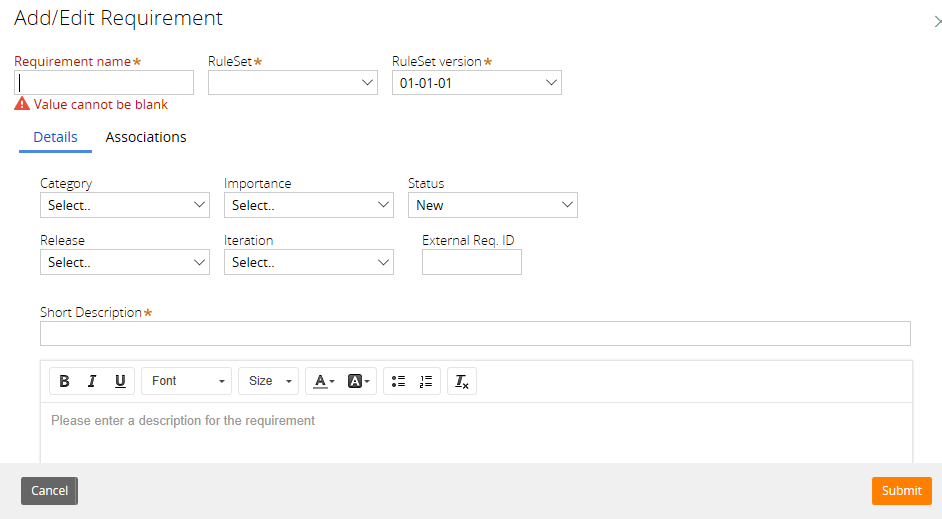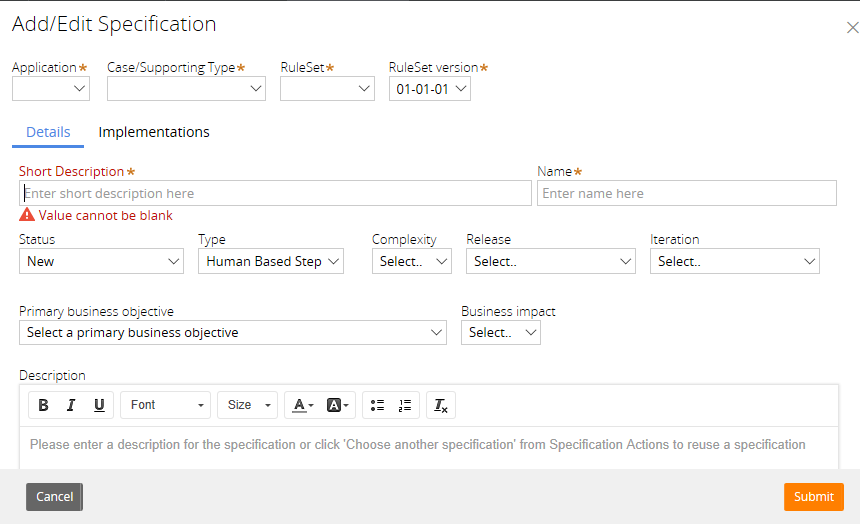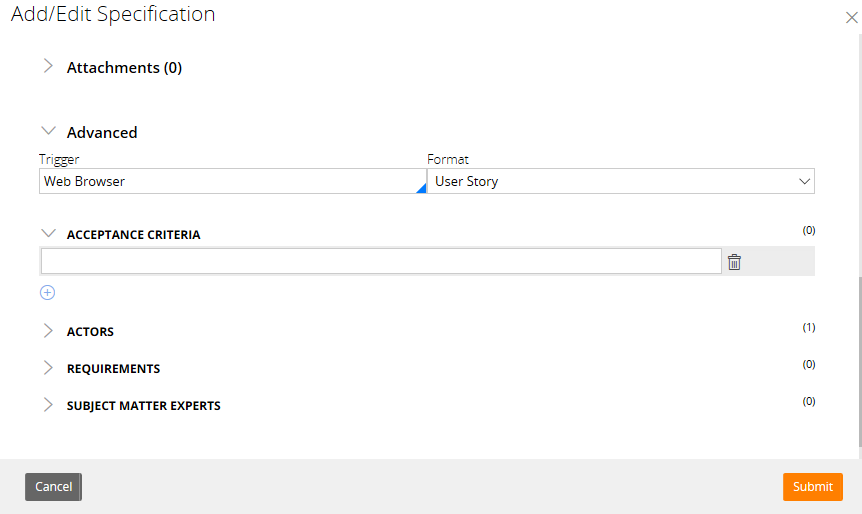If you are a Pega Business Architect, you will be familiar with Pega’s feature that lets you connect Business Objectives, Requirements and Specifications.
This feature is excellent for traceability but it may surprise you to know that I don’t use it exactly the way Pega tells you to.
Business Objectives
‘Business objectives illustrate how the Pega application delivers value to the business’1
It’s important that everyone on a Pega development understands what value they are trying to deliver to their customer because software delivery is not an end in itself, it is merely a means to the true end, which is realisation of the desired business benefit (which should be stated in the business case and encapsulated in the Business Objectives). Yet you’d be surprised at how few projects (in my experience) actually document Business Objectives in Pega. I’ve even worked on projects where no one on the team could tell me what they were or where they were documented. Not only do I document them, I also like to print them out and stick them on the wall so everyone keeps sight of them. Pega encourages you to keep Business Objectives SMART, which is absolutely correct, and provides you with the means to capture them:
However, I have some reservations. Firstly, any Pega project I’ve been on has had a wider scope than the Pega solution, usually involving other technologies as well as non-technological business changes, so there will be Business Objectives which are important to the success of the change initiative but which are not relevant to the Pega solution. Thus it makes no sense to make Pega the golden repository of Business Objectives, rather, I would document the Business Objectives in the business architecture repository and put a reference in Pega to the ones relevant to the Pega solution.
Moreover, while you can write a SMART one-liner, I like to put a lot more meat on strategic business goals. Click here to see what I mean.
Requirements
‘One or more requirements define the criteria for the successful implementation of a specification.’2
Pega allows you to capture Requirements via the following form:
This form has hardly changed at all since Pega first introduced DCO in 2008. That’s not a bad thing in itself because many organisations still develop software the way they did in 2008 and the tool caters for that. In any case, if you don’t think it’s broken, why fix it?
My preference these days is to work with User Stories rather than Use Cases. The Pega Specification (see below) allows you to document either User Stories or Use Cases. The statement above, talks about Requirements as if they were User Story Acceptance Criteria, which they are, in my opinion, if you are taking a User Story approach.
The main problem I have always had with the Requirement form in Pega is that there is no way to indicate which Business Objective the Requirement is supposed to support. If you are following Pega’s methodology, you first document Business Objectives and then an initial set of Requirements. However, since you cannot link the two directly, the opportunity for scope creep is there. I suspect this lack of linking is also part of the reason people often ignore Business Objectives.
Specifications
‘Specifications use business language to describe the steps needed to meet a requirement.’3
That’s what Pega says Specifications are for but it’s not what I recommend. Pega allows you to document Specifications as either Use Cases or User Stories and since my preference is for the latter, let’s stick with that. I prefer Mike Cohn’s definition of a User Story:
‘User stories are short, simple descriptions of a feature told from the perspective of the person who desires the new capability, usually a user or customer of the system.’ – Mike Cohn4
I also like the description of User Stories as ‘placeholders for a conversation’; that being the case, a Specification in Pega is effectively a useful placeholder for anything you care to document about that conversation (business background, diagrams, acceptance criteria, technical solution designs, risks, assumptions, links to further useful information, etc.). Remember, Agile principles promote conversation over documentation, not instead of documentation.
Notice that it is a Pega Specification that you link back to a Business Objective (unfortunately, only one), so although the sequence of creation is supposed to be: Business Objective –> Requirement –> Specification, the mechanism of traceability is, in fact: Business Objective –> Specification <– Requirement.
Notice that you can document both Acceptance Criteria and Requirements against a Pega Specification of type User Story:
As I said, I consider the Acceptance Criteria of a User Story to be Requirements and judging by Pega’s definition of the purpose of Requirements (‘requirements define the criteria for the successful implementation of a specification’), perhaps they would agree. Therefore, I would not add both Acceptance Criteria and Requirements to my Pega application. Instead I would:
- Document Business Objectives
- Add User Stories from the customer’s Product Back Log in the form of Specifications
- Document Requirements or Acceptance Criteria against those Specifications
Note that if you document Requirements as Acceptance Criteria, you only get to add a single line of text. However, if you document Acceptance Criteria as Requirements, you get the richness of the Requirements form (see above).
Although my approach is not how Pega’s training says to do it, it does give you traceability from the outset: Business Objective –> Specification –> Requirement / Acceptance Criterion
Full credit to Pega for not enforcing their way of doing it. That’s the right approach to methodology: adapt it to your needs.
What have your experiences been?
Kind regards.
Declan Chellar




Leave a Reply